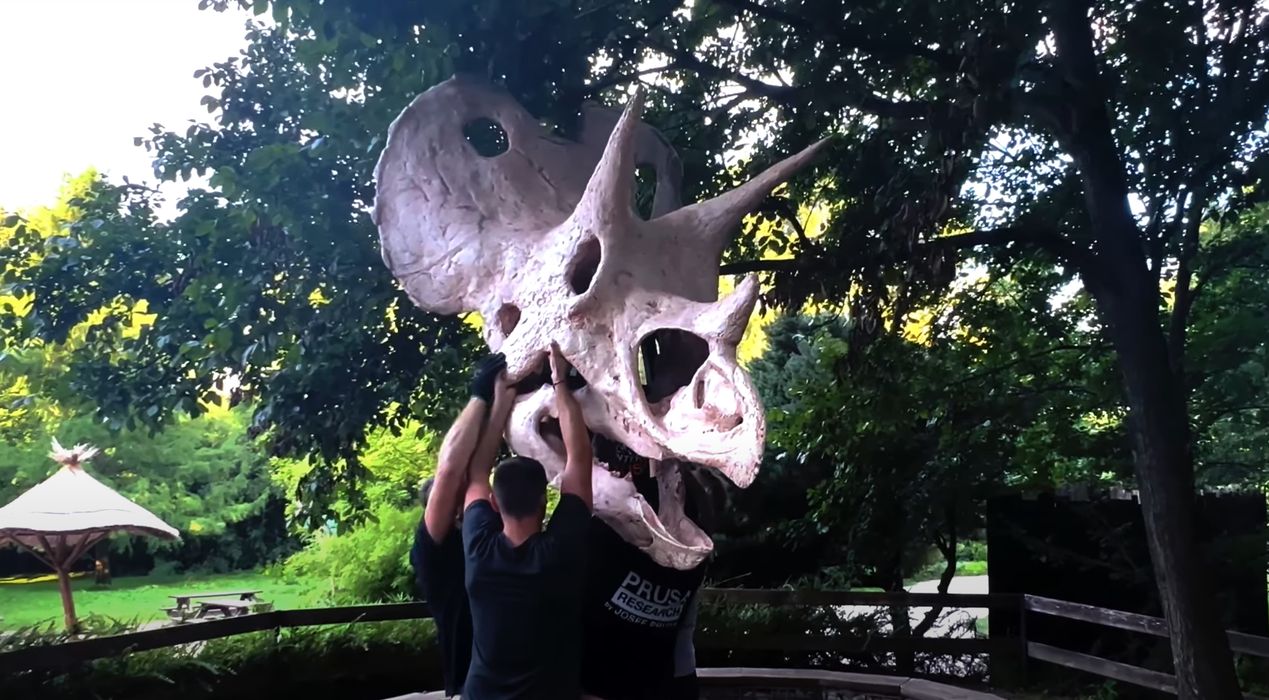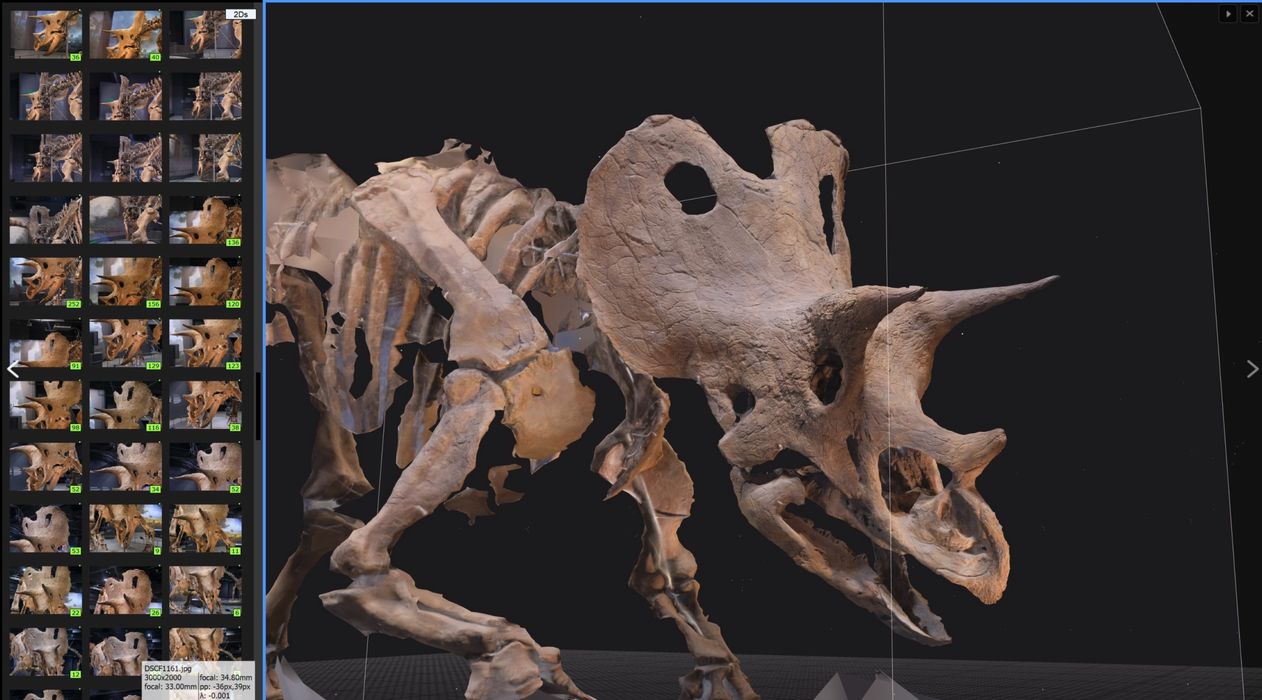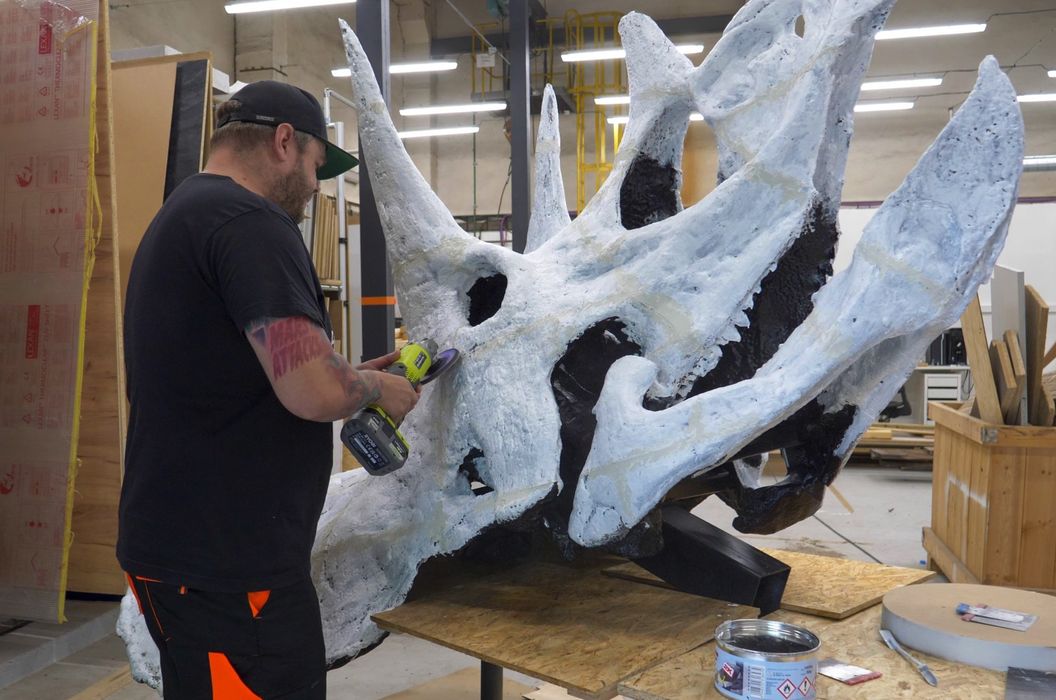
This week’s selection is the massive Triceratops Skull by Prusa Research.
There could be only one choice for this week, and it’s the massive dinosaur print undertaken by Prusa Research and Dinosauria Museum Prague.
It turns out that the museum, located near the Prague airport, was the trigger for this operation. Prusa Research staff were asked by the museum if a dinosaur skull could be 3D printed. Prusa Research’s response:
“You bet jur-ass-i-can.”
The result was a busy project to produce a massive, full size replica of a Triceratops skull. The skull was found in Montana, and is 66 million years old. That would put its lifetime very close to the meteor event that took out the dinosaurs, making this skull even more memorable.

A team from Prusa Research was able to capture a detailed 3D scan of the skull by means of photogrammetry. They used a standard DSLR camera to capture 250 excellent photos, and fed those into Reality Capture for processing with a hefty graphics card. The result was an incredible 3D model with 5.2M facets.
The enormous model could not be printed in one piece, so in order to fit it on the company’s XL devices they used PrusaSlicer’s new cutting features to chop it into 34 still-large pieces suitable for printing.
The 34 pieces were then printed in black PETG Prusament material, ready for assembly. Two liters of superglue were used to fix the parts together, followed by multiple applications of sealant for outdoor environmental protection. Finally, the outer surface was painted in a way to simulate the visual appearance of prehistoric bones.

The resulting model weighed a whopping 66kg, and requires four people to move it. The print was mounted on a stand and placed outdoors at the Dinosauria Museum Prague where visitors can see what appears to be a real dinosaur skull up close.
Dinosauria Museum Prague has posted the 3D model on Printables for anyone to download and print. But be warned, it’s a massive 3D model that is 25MB in size. Your slicer may choke!
I’m going to attempt to print this one myself — but not quite at life size dimensions.
Via Prusa Research and Printables
